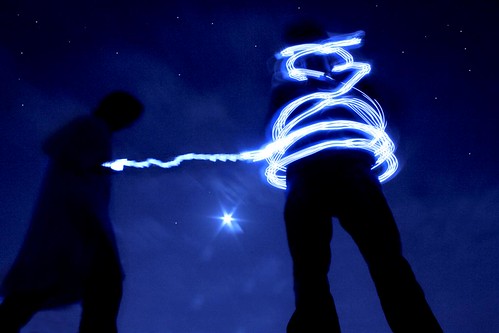Well, it's getting around to being that time of year again. Yes, I'm talking about the Sherwood Forest Renaissance Festival!
Once again I'll be performing out at the festival, and once again here I am panicking about my show. I suppose panic isn't really the best word, but I am fretting a bit. I still have to solidify my show before the first weekend of faire (February 19th) and it's really hard to get motivated to do so.
So, instead of working on my show like I should be doing, I'm going to go ahead and give a brief go at talking about routineing.
Routineing, the benefits of
Routineing is, at it's simplest, stringing together a series of tricks so that they make sense together. Easy right? It is, but you'd be surprised at how many people don't put any thought into it. Routineing can be the difference between hearing "That was cool" and hearing "That guy was awesome". So let's get into it! (note: this is in no particular order)
The biggest thing that you're going to want to start with is flow. Now what I mean by this is that your routine (show, whatever you want to call it) has a rhythm in that one effect naturally flows to the next. An example would be that if you turn a dove into a billiard ball, then the next effect naturally would involve that ball. This is something that is hard to achieve sometimes, and occasionally you'll want to do an effect that purposefully breaks that rhythm, and that's okay, just as long as the rhythm is purposefully broken and then restored.
An example would be if you do a dollar bill tear and then move on to the cups, only to reveal a lemon as a final load, and then have the rest of the restored bill inside the lemon. That's breaking the flow intentionally, while restoring it at a later time so the whole thing makes sense.
Because there's a difference between seeing a lot of tricks and seeing a routine. A routine makes sense where as a bunch of tricks is just that: a jumble of random tricks.
So step one is working on flow.
Step two for routineing would be to make sure that your patter is perfect (perhaps this should be step one, no?). A perfectly timed routine that flows perfectly from one effect to the next will build on itself and everything makes sense, but it can all come crashing down if your patter either doesn't make sense or you don't have your patter down to the point that it is second nature.
Your patter should not be something you're saying. Your patter should be something that is almost inseparable from your effect. Good patter is not just words for the audience, but place holders for yourself. I can't tell you how many times I've lost my place in a routine because someone said something and I responded, only to forget where I was in the routine! Remembering what you last said let's you drop back into the routine without any hesitation whatsoever.
Finally, a routine offers a core of material that you can work from. What I mean here is that you can have a three trick routine with several other tricks that can easily be put in or taken out depending on how the audience is reacting. Thus, a core routine can give you ten minutes of material or, once you've got it down, you can sub in some more material for a longer show.
A fun example is something that happens more often than you'd think for me. I often find that a woman's purse is open a bit and I'm able to slip a card into it. Now a card to purse isn't in my regular routine, but it fits in perfectly in my walk-around and can be slipped in whenever the chance arises. It's a wonderful little thing that I try to take advantage of as often as possible. Now, if you have a core routine, it's easy to slide out into the side effect and back into your routine without having to think "Gee, what am I doing next?"
So there are a lot of benefits to routineing, and I'll go more in depth on actual routineing and how to accomplish it later, but for now there's a bowl of Raisin Bran waiting for me.
.
Monday, January 17, 2011
Subscribe to:
Post Comments (Atom)








No Response to "A month to go"
Post a Comment